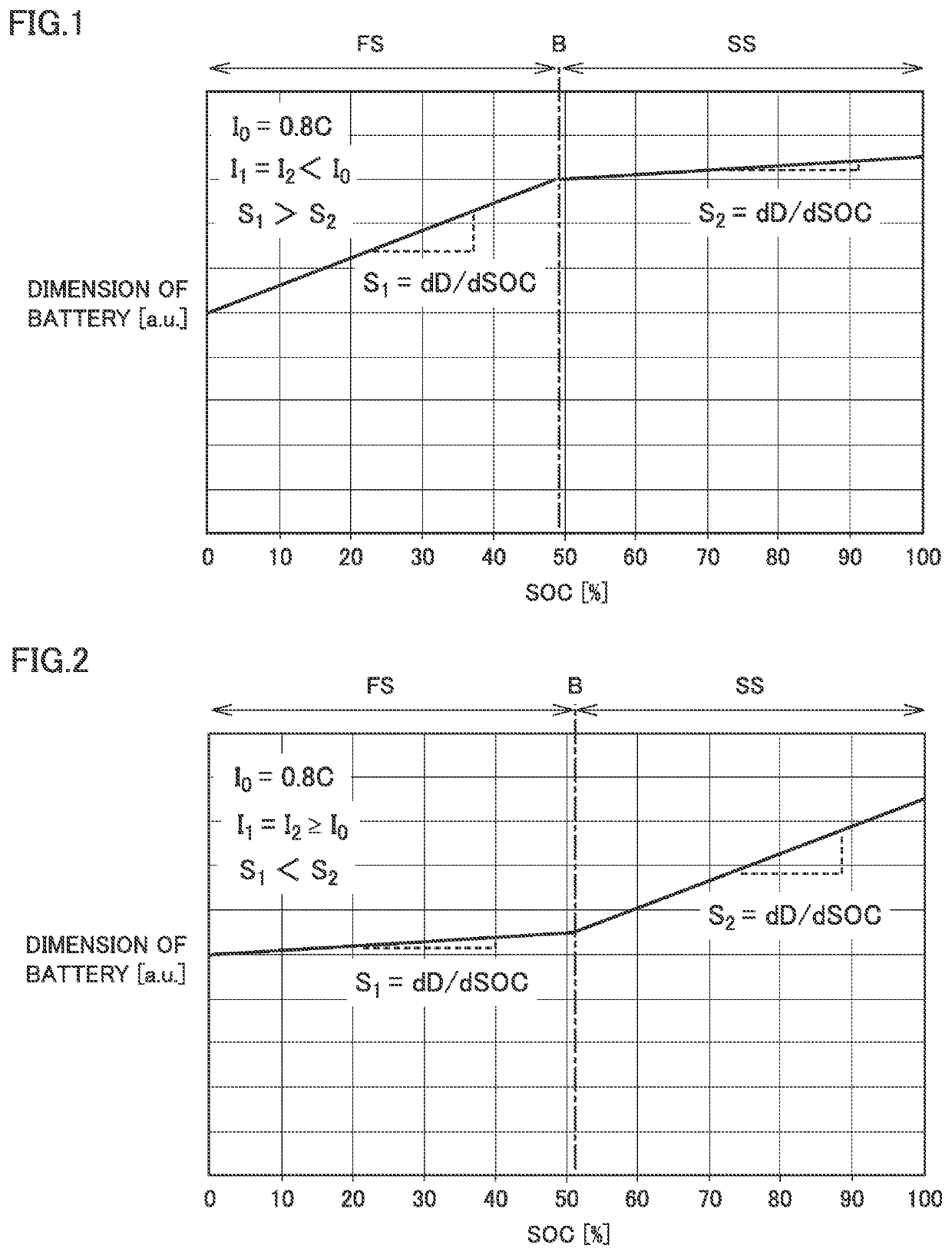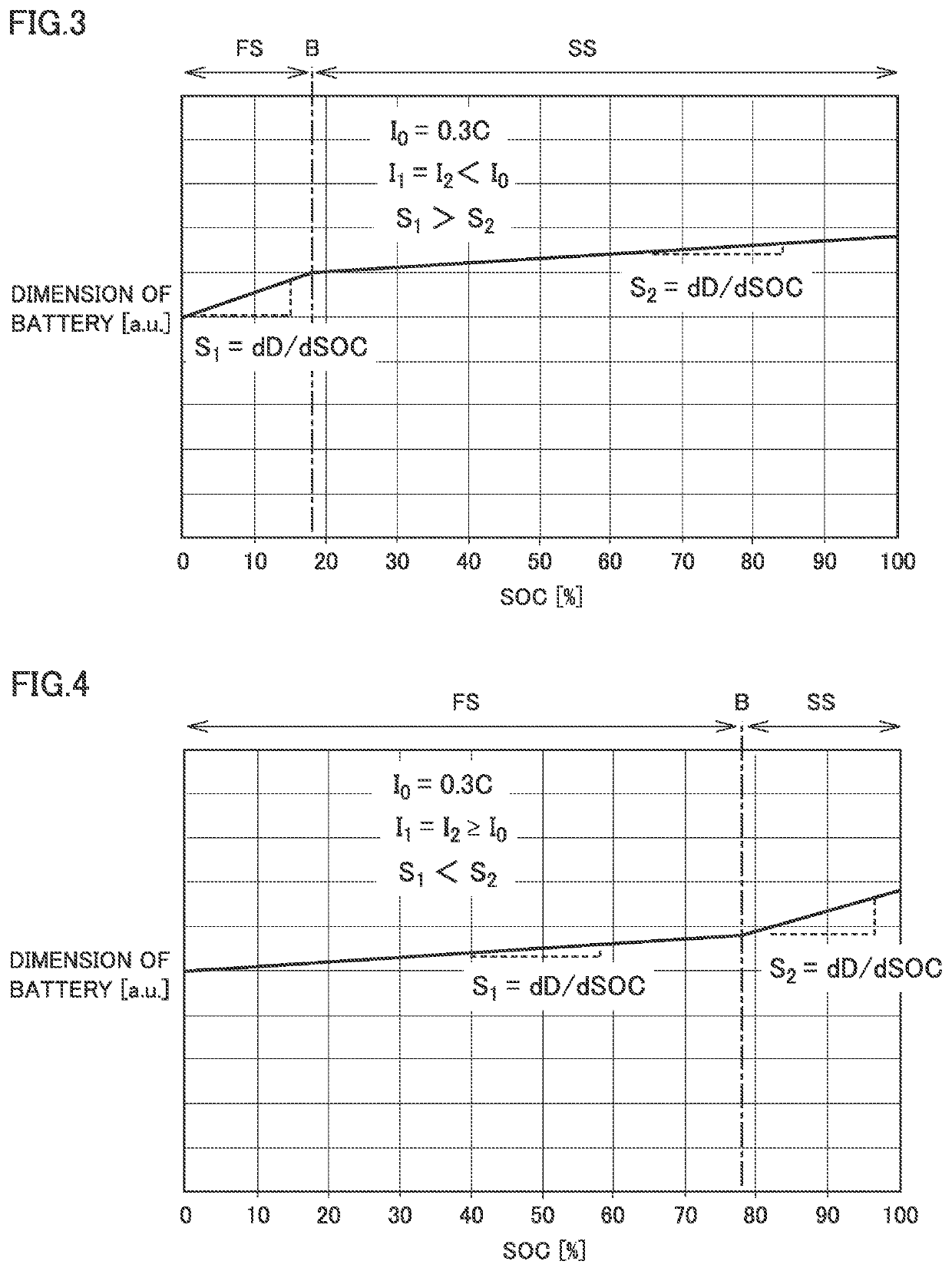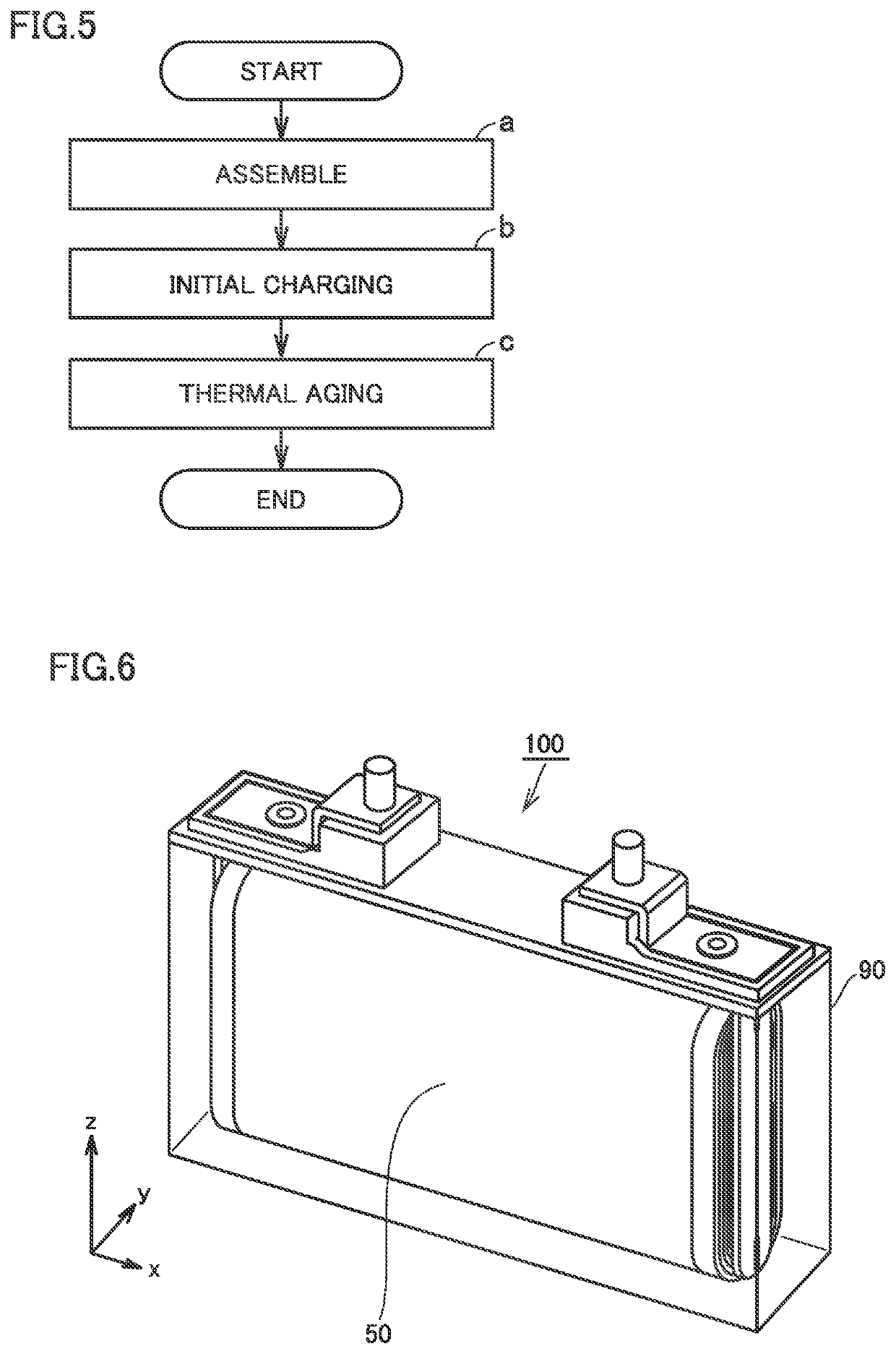Method of producing lithium-ion battery
- Summary
- Abstract
- Description
- Claims
- Application Information
AI Technical Summary
Benefits of technology
Problems solved by technology
Method used
Image
Examples
examples
[0098]Next, examples according to the present disclosure (herein also called “the present example”) are described. It should be noted that the description below does not limit the scope of claims.
[0099]In the present example, the thickness of the battery is used as the dimension of the battery.
experiment 1
Example 4, Comparative Example 1 to Comparative Example 4
[0100]Lithium-ion batteries were produced by below-described production methods.
example 1
[0101]1. (a) Assembling
[0102]A battery having the below configuration was assembled.
[0103]Positive electrode active material: LiNi1 / 3Co1 / 3Mn1 / 3O2
[0104]Negative electrode active material: Graphite / SiO=85 / 15
[0105]Inherent current rate (I0): 0.8 C
[0106]FIG. 1 is a first example of a charging profile obtained with a graphite-SiO mixed system. FIG. 1 presents the charging profile obtained when the battery with the configuration of Experiment 1 was charged at a current rate lower than the inherent current rate (I0).
[0107]FIG. 2 is a second example of a charging profile obtained with a graphite-SiO mixed system. FIG. 2 presents the charging profile obtained when the battery with the configuration of Experiment 1 was charged at a current rate equal to or higher than the inherent current rate (I0).
[0108]2. (b) Initial Charging
[0109]2-1. First Stage (FS)
[0110]In an environment at a temperature of 25° C., charging in the first stage (FS) was completed at a first current rate (I1) of 0.5 C. In...
PUM
 Login to View More
Login to View More Abstract
Description
Claims
Application Information
 Login to View More
Login to View More - Generate Ideas
- Intellectual Property
- Life Sciences
- Materials
- Tech Scout
- Unparalleled Data Quality
- Higher Quality Content
- 60% Fewer Hallucinations
Browse by: Latest US Patents, China's latest patents, Technical Efficacy Thesaurus, Application Domain, Technology Topic, Popular Technical Reports.
© 2025 PatSnap. All rights reserved.Legal|Privacy policy|Modern Slavery Act Transparency Statement|Sitemap|About US| Contact US: help@patsnap.com



